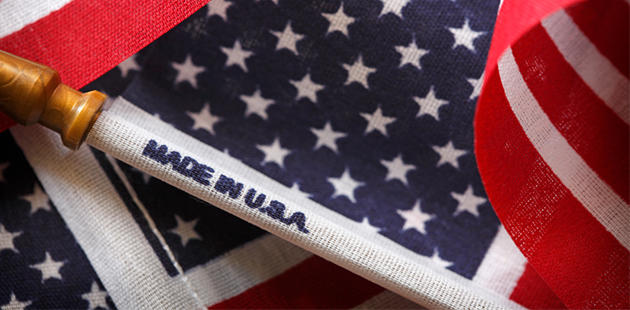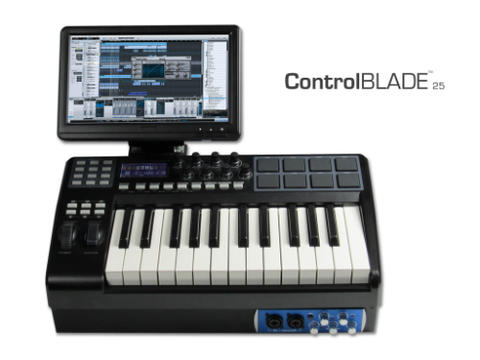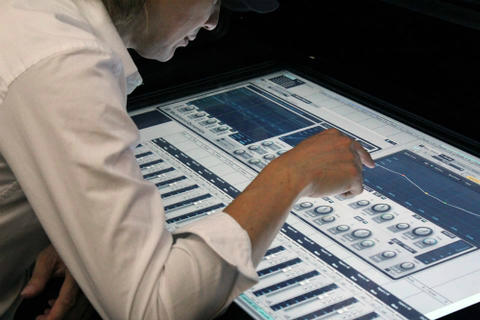Manufacturing Innovation Blog
Powered by the Manufacturing Extension Partnership
Made in America: Why New-Shoring Is the New School of Manufacturing Trends for Small Business

This article originally appeared on Autodesk’s Line//Shape//Space, a site dedicated to inspiring designers and creators.
You may get your product faster and cheaper, but manufacturing overseas has its pitfalls. Through a combination of one of the new manufacturing trends, “new-shoring”—creating new jobs closer to home—and smarter international manufacturing practices, small businesses are helping protect their valuable assets.
“Here’s the short-term view,” explains Victor Wong, CEO of Austin-based company Music Computing. “Overseas manufacturing makes great sense. We get to produce products for 10 cents on the dollar, we get great quality, and we don’t have to pay for insurance. It comes to the States, and we can sell it at a lower price than our competitors, or at the very least we can compete at the same pricing level as other people who manufacture overseas. The long-term view is… never ever do that.”

Here’s why: For Wong and many of his fellow business owners, manufacturing in many developing or emerging countries can mean rolling the dice with your IP. Whether it’s at the hands of an enterprising, opportunistic employee or a shady subcontractor, having your idea stolen and duplicated is a very real possibility, especially if it’s a proprietary creation with potentially high demand overseas. In the music-industry (MI) space particularly, clones not only eat into the bottom line, but when the fake product doesn’t perform, it creates a false sense of inadequacy with the product that can damage the company’s reputation moving forward. So what do you do?
Unlike reshoring—which implies bringing jobs back to the U.S. that had previously left—many small businesses are new-shoring their products, which means starting from scratch right here in the States. The advantage? It may cost a little more, but by locally prototyping and building the first few batches of your product close to you, you’ll be able to see and fix potential issues and confidently get your item to mass market. For Wong, the first step is having reliable tools.
“While I usually design most of the products in my head to start with, they have to be re-created in AutoCAD so there is an accurate model to be used as the reference for manufacturing. Oftentimes, we will need to make quick changes due to substitution of components or new features. AutoCAD allows us to do that with ease and accuracy.”

Another issue to consider with new-shoring is the cachet of the “Made in America” label. For many, the phrase is a beacon that helps attract clientele, but what about consumers who are a bit more skeptical? Wong has a solution. Rather than trumpet the USA, he advertises Music Computing products as “designed and assembled in Austin.”
“Austin has an active tech business, and we’re a big music town,” he explains. “We market toward the strength of Austin, and secondly Texas.”
Try as they may, however, some small businesses just can’t afford to start fresh in the U.S. If new-shoring is a goal your small business is working toward, make sure you take the necessary steps to protect your IP overseas. If you’ve got a product with multiple parts, don’t manufacture everything in the same location. For example, in instances where electronics are being produced, procure your hard drive from one company, have the shell manufactured at another location, and obtain things like keyboards from a third partner, then assemble locally.

“It’s the Wild West out there,” Wong says. “Make enough money to stay in business, and produce it close to you to handle emergencies or changes. Once you’re up and walking—not running, walking—then you can start optimizing your cost and your supply chain. Of course, the real secret is to make sure the product is unique. Then you can rely on that newness to demand a premium for it, which will offset your cost of having to produce it here in the U.S.”
Are you incorporating new-shoring into your business, or do you have a story you’d like to share about manufacturing overseas? Please tell us about it below in the comments section.
About the author
Related Posts
Comments
- Reply

